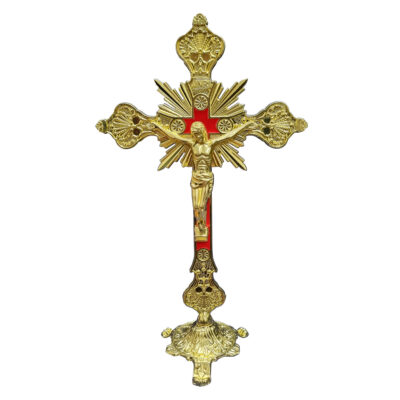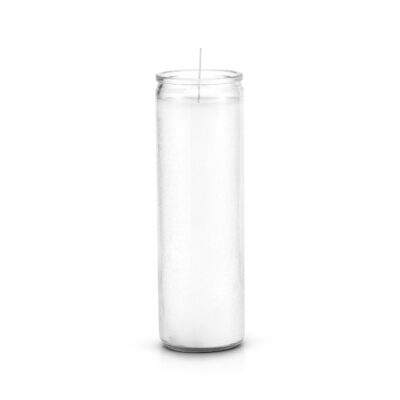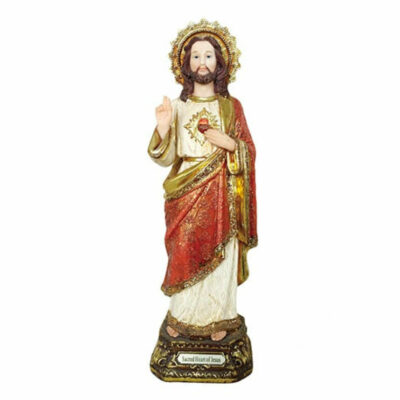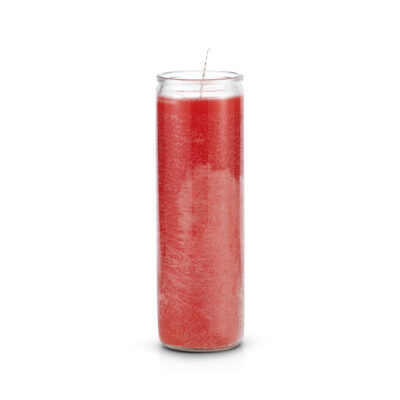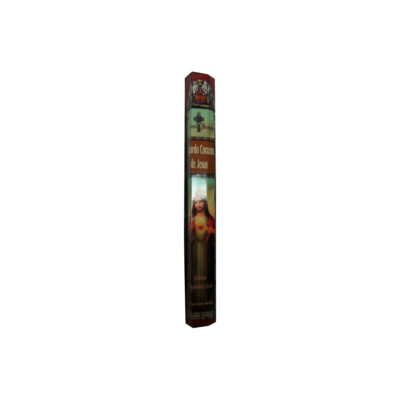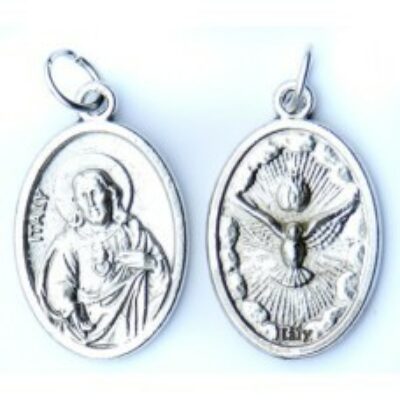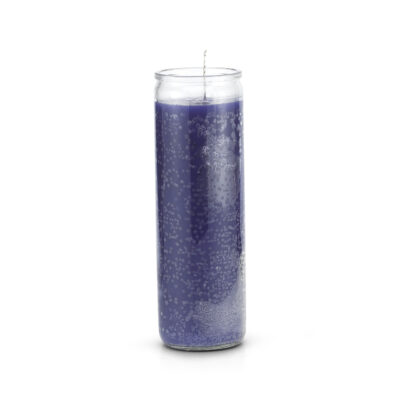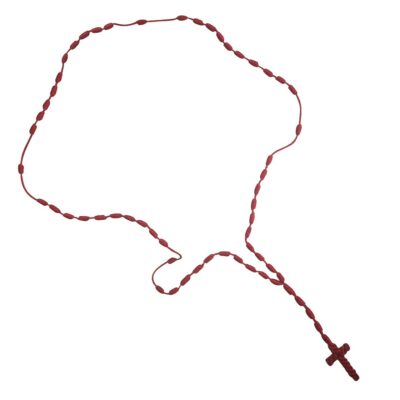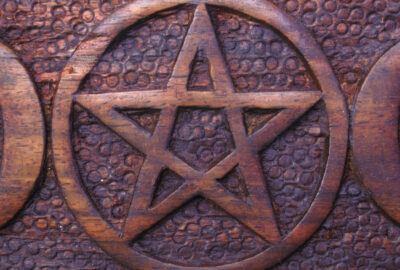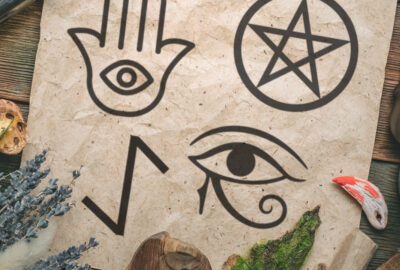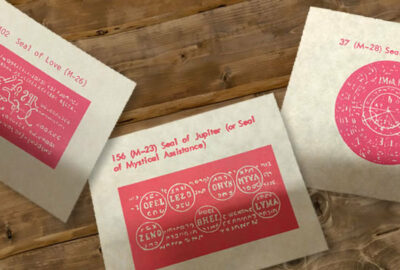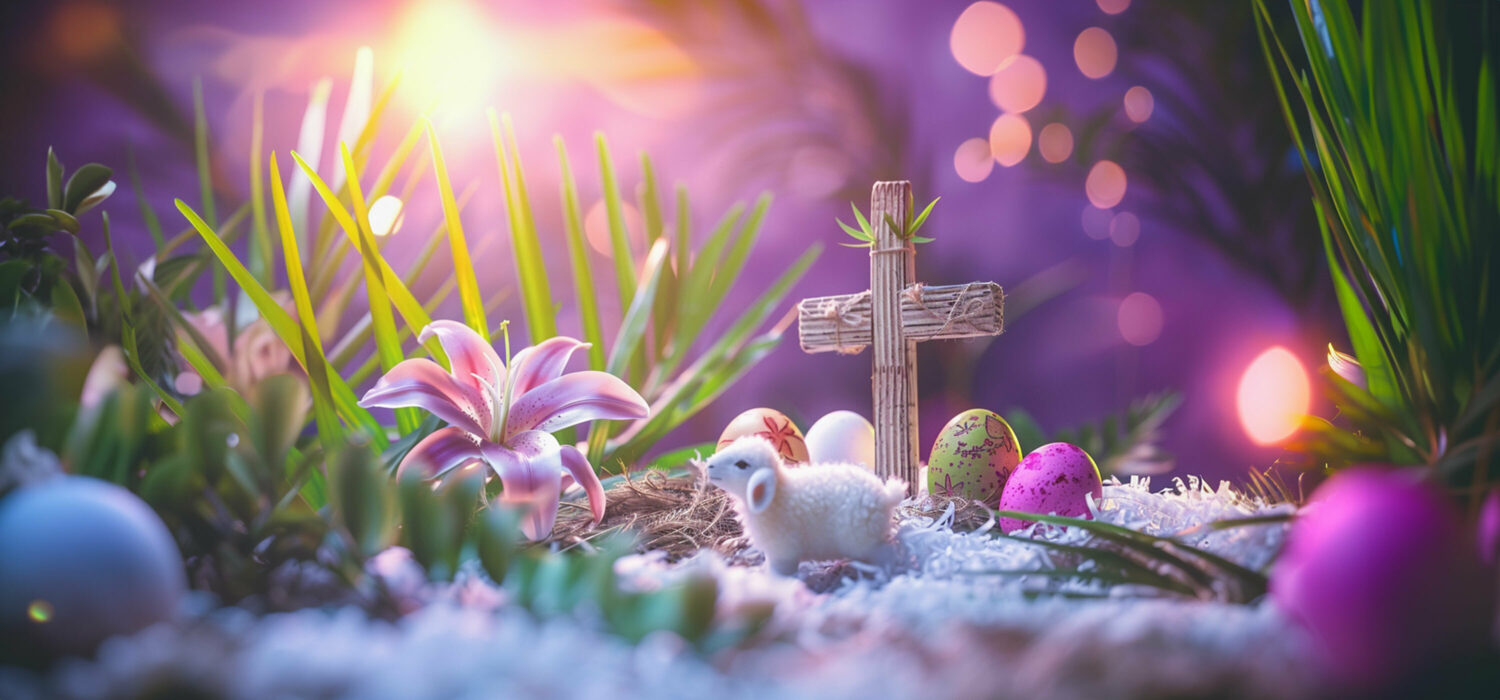
Easter: The Origin and Meaning of its Symbols
When you hear the word "Easter," it usually conjures up a few unique symbols: dyed eggs, lambs, rabbits, and so on. Many old traditions have become wrapped up in Easter over the years, but where did they come from? If Easter, itself, is a Christian holiday, what does the Resurrection have to do with eggs and rabbits?
Easter's Changing Date
Easter's journey through the calendar is like a mystery adventure, not staying put like Christmas does on December 25th. This adventure is guided by the moon and the sun, making Easter's date a celestial puzzle to solve each year.
Easter waits for the Sunday that follows the first full moon after March 21st, the spring equinox. This setup means Easter can pop up anytime between March 22nd and April 25th.
This unique way of finding Easter's date isn't just about sticking to a schedule; it's deeply rooted in tradition, ensuring Easter follows Passover, echoing the timeline of Jesus' final week. But the tale doesn't end here. This dating method tips its hat to ancient customs that predate our current Easter celebrations.
Way back, folks celebrated the spring equinox, marking spring's arrival and the return of life, symbolized by longer days and the warming sun. Ancient narratives, like "The Descent of Inanna," where Tammuz brings warmth back to Earth, mirror these natural cycles of life, death, and rebirth.
Switching gears, while many of us mark Easter based on the Western Gregorian calendar, the Orthodox Christian Churches follow a different path using the Julian calendar. This difference means Orthodox Easter often lands on a different date, anywhere between April 4th and May 8th on the Gregorian calendar.
This variation highlights the diversity within Christianity, with both traditions honoring the resurrection of Jesus on separate days. It's fascinating to see how Easter's date is a tapestry woven from astronomy, ancient myths, and traditions across cultures, connecting us to humanity's shared history and the natural world's timeless cycles.
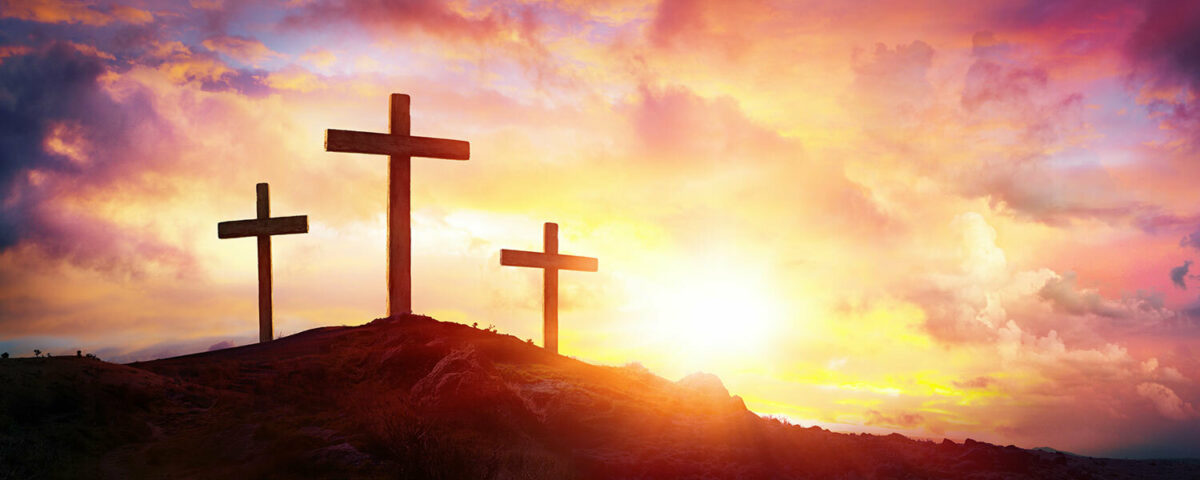
During Easter, the cross turns into a symbol of hope, love, and new beginnings.
The Cross
The cross is one of the most powerful symbols of Easter. While Easter is filled with fun stuff like egg hunts and chocolate bunnies, the cross brings us back to the heart of the celebration: remembering the story of Jesus and his love.
Long ago, the cross was a symbol of pain and punishment, but on Easter, it turns into a symbol of hope, love, and new beginnings. This change is because Easter celebrates the moment Jesus rose from the dead, showing that love and goodness can overcome anything, even death.
Seeing the cross during Easter reminds people that this holiday is more than just springtime fun. It's about kindness, forgiveness, and the chance to start fresh, no matter what mistakes we've made. It tells us that there's always light even in the darkest times, and it encourages us to spread love and help others.
Easter's Sacred Colors
In Easter celebrations, colors aren't just for decoration—they tell a deep story of faith and hope. Let's look at a few colors that carry special meanings during Easter, focusing on their religious significance.
Purple is an important color during Easter. It's a color that represents royalty and repentance. Before Easter, during Lent, churches are often draped in purple. It's like a sign that people are preparing their hearts and saying sorry for things they've done wrong, getting ready for Easter's message of forgiveness.
White shines bright on Easter Sunday. This color is all about purity, new life, and victory. It's like celebrating the big win of good over evil and life over death because of Jesus' resurrection. When you see white at Easter, think of joy, light, and the fresh start that comes from Jesus' love and sacrifice.
Red is powerful and demands attention. It symbolizes the sacrifice and love of Jesus, especially his death on the cross. Red is like a reminder of the serious love story at the heart of Easter—the kind of love that would do anything for others.
These symbolic colors—purple, white, and red—mix together to paint the true meaning of Easter. They're not just there to look pretty; they're symbols of preparation, celebration, and sacrifice. They remind us of the journey from Lent to Easter Sunday, a journey from reflection to the joyous celebration of new life and endless love. So, next time you see these colors around Easter, remember the deep, beautiful stories they tell.
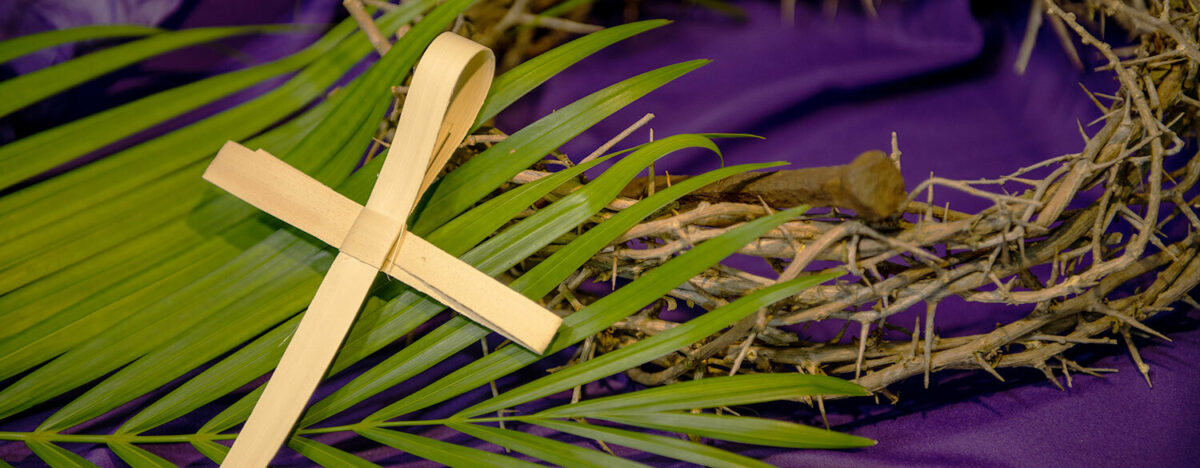
Palm branches are a symbol of Easter's victory and peace, a timeless tribute to triumphs over challenges.
Palm Branches
In the Easter story, the palm branch is way more than just a leaf. It's a symbol packed with meaning. Imagine this: people in ancient times used palm branches as a way to welcome heroes and kings. So, when Jesus entered Jerusalem, and everyone waved palm branches, they were treating him like a king. This event is so important that many churches remember it by celebrating Palm Sunday right before Easter.
But wait, there's more meaning to these branches than just a royal welcome. Palms are also symbols of victory and peace. In ancient times, winners of battles or games were often given palm branches as trophies. For Easter, this idea of victory connects to Jesus's triumph over death. It's like the palms are saying, "Good wins over bad, life wins over death."
As you see them around this Easter season, remember that palm branches tell a story of welcome, honor, and victory. They remind us of Jesus's journey, his challenges, and his ultimate win, which is what Easter is all about. It's a time for us to think about new beginnings, overcoming obstacles, and finding peace in tough times.
Easter Lilies
Easter Lilies are like special guests at Easter celebrations. Picture this: a flower so white, it’s like a light shining in a dark room. These flowers aren’t just pretty; they carry a deep message. They are a symbol of purity, hope, and the joy of new beginnings. Think of the Easter Lily as a friend who whispers, “No matter what, there’s always a fresh start.”
These beautiful, bright flowers are often called “White Robed Apostles of Hope.” It’s a fancy way of saying they stand for the good and pure things in the world. When spring rolls around and these lilies bloom, they’re like nature’s way of celebrating. They’re telling us that, just like spring follows winter, brighter days follow tough times.
So, when you see an Easter Lily, keep in mind that it’s not just a decoration. It’s a symbol packed with meaning. It’s about believing in the good, looking forward to new starts, and celebrating life. Easter Lilies are like nature’s reminder that hope and love are always around, waiting to bloom in our hearts.
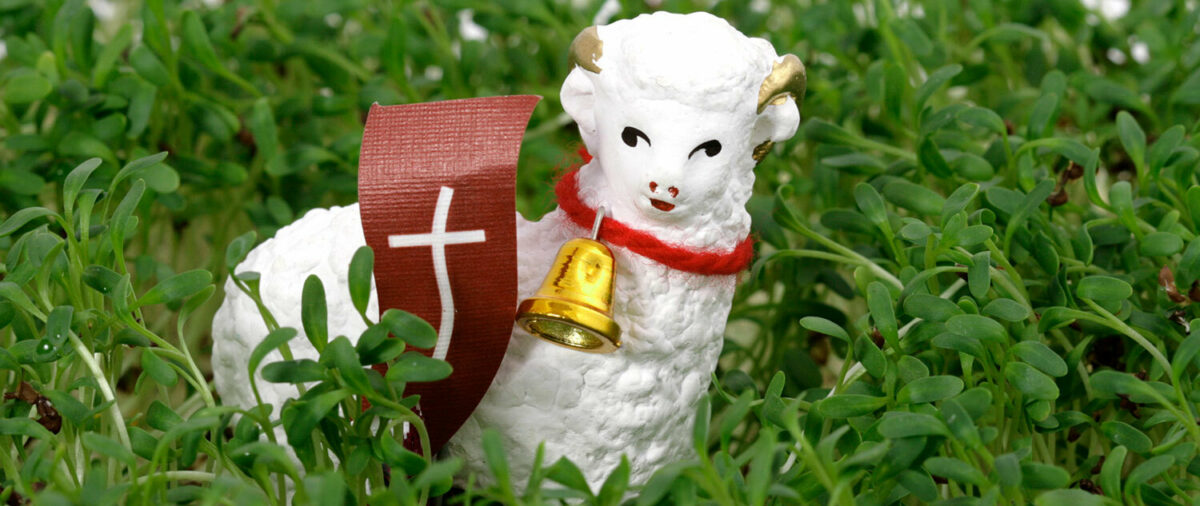
Lambs are an Easter symbol that connects to a story about Jesus who is often called the "Lamb of God."
Lambs and Chicks
Spring brings a kind of magic that wakes up the world after a long winter nap. It’s like nature’s green light for growth and new beginnings. This is especially true for the cutest members of spring - baby animals like lambs and chicks. Imagine them hopping and bopping around, full of life. That’s what Easter vibes are all about!
Easter falls in spring, a time when days get friendlier with more sunshine and the earth seems to laugh with flowers. Lambs and chicks become the stars of this season. Why? Because they symbolize all the fresh starts and new life popping up everywhere.
But there's an even deeper story with lambs. They connect to a very old, very special story about Jesus, often called the "Lamb of God." In stories that many folks find sacred, lambs are symbols of kindness, innocence, and the ultimate sacrifice. Jesus being called this lamb talks about love, hope, and giving.
When Easter arrives and you see pictures or decorations of lambs and chicks, remember they’re not just there to look cute. They’re symbols packed with meaning - about new life, love, and the springtime magic that brings the world back to life. It’s a time to feel hopeful, to look at the budding trees and think, "Yeah, new beginnings are possible, and the world is pretty amazing."
This Easter, when you spot a lamb or a chick, whether in a field or as a fluffy decoration, take a moment to appreciate the deep stories and hopeful vibes they bring to this joyful season.
Dyed Eggs
Dyed eggs at Easter aren't just for fun; they're like a bridge connecting us to stories and traditions from long ago. Picture this: way back in places like Mesopotamia, Russia, and even colder Siberia, people started the tradition of coloring eggs. But why red? It was all about remembering a very important event - the sacrifice of Christ, symbolized by the red color for his blood. At the same time, the egg wasn't just an egg; it stood for the empty tomb, a sign of Jesus rising and a huge part of the Easter story.
This egg tradition wasn't just picked up randomly. Early Christians in Mesopotamia thought it was a perfect symbol for Easter. It was about new life, hope, and starting fresh, which matched the Easter vibe perfectly. The Eastern Orthodox Church took it to another level with the colors and designs, adding deeper meanings and making it a big part of their celebration.
In some parts of Eastern Europe, they have this unique tradition where men collect eggs from the women and then playfully splash water on them. It's not just about fun; it's seen as a way to wish health and beauty. Plus, it ties back to those themes of life and renewal that Easter is all about.
Remember it's not just a playful activity when you're dyeing eggs this Easter or setting them up around the house. It's a centuries-old tradition that connects us with history, culture, and deep meanings about life, renewal, and hope. Whether those eggs are real, made of wood, or even sparkly quartz, they're more than just decorations; they're symbols of a beautiful season of change.
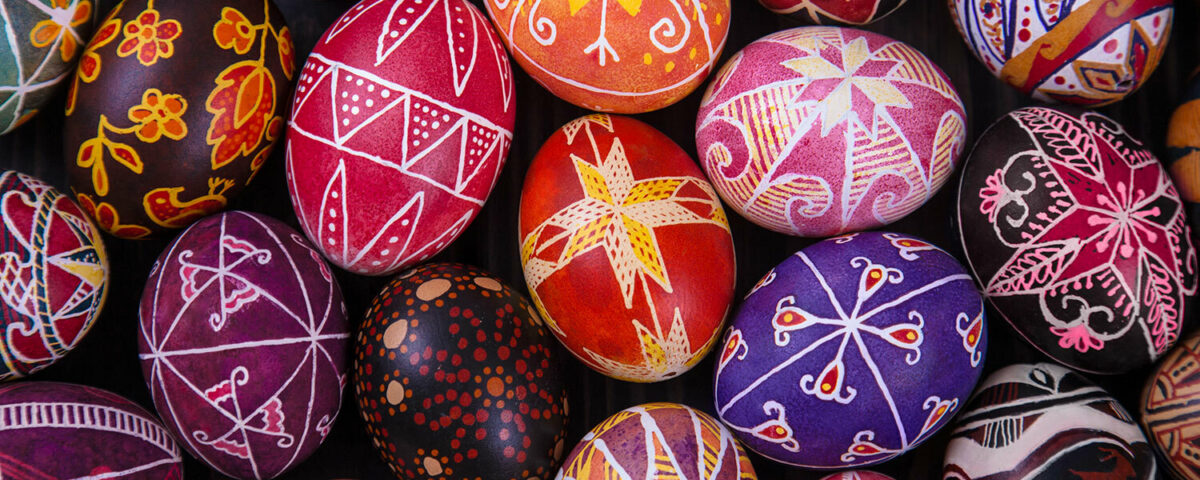
Easter eggs are a colorful Easter symbol that serves as a reminder of life's perpetual rebirth.
The Easter Bunny
The Easter Bunny is like the unofficial mascot of Easter, hopping into the holiday with a basket full of mystery and tradition. But have you ever wondered how a bunny and Easter became such close buddies? Well, it's a tale that hops across oceans and centuries.
Long ago, before there were chocolate eggs and jelly beans, rabbits were seen as symbols of new life and growth because they were good at having many babies. This idea was super important to people celebrating the arrival of spring, especially to those honoring the goddess Eostre, who was all about spring and fertility.
As the story goes, when people in Germany started blending their spring celebrations with the Christian observance of Easter, the rabbit hopped right into the mix because of its connection to Eostre. It was like the rabbit was a natural fit for a holiday that's all about hope, renewal, and life starting anew.
Then, as people moved around the world, they took their traditions with them. German immigrants brought the Easter Bunny to the United States, where it became a beloved part of Easter celebrations, just like dyeing eggs and hunting for them on Easter morning.
An Easter Prayer
Easter is a good time to bring fresh spring flowers into your home, clean out the dust and clutter of the wintertime, light some candles, and say a prayer. Give your home a thorough wash with Spiritual Cleansing Big Al Bath & Floor Wash, and set your altar with white candles and either Sacred Heart of Jesus incense sticks, or jasmine incense.
Light the candles and incense, center yourself, and say...
Draw us forth, God of all creation.
Draw us forward and away from limited certainty into the immense world of your love.
Give us the capacity to even for a moment taste the richness of the feast you give us.
Give us the peace to live with uncertainty, with questions, with doubts.
Help us to experience the resurrection anew with open wonder and an increasing ability to see you in the people of Easter.
Or...
As life returns, greening and growing again from the earth, we welcome the goddesses of spring.
From the soil to the flowers, and the spring rains to the trees, come and be welcome.
Whether you celebrate Easter or not, Easter traditions are familiar to many people as signs of springtime. Their roles in ancient paganism do not diminish their place in modern Christianity; it strengthen them as symbols of the reborn, renewed earth and the return of life to the world.
